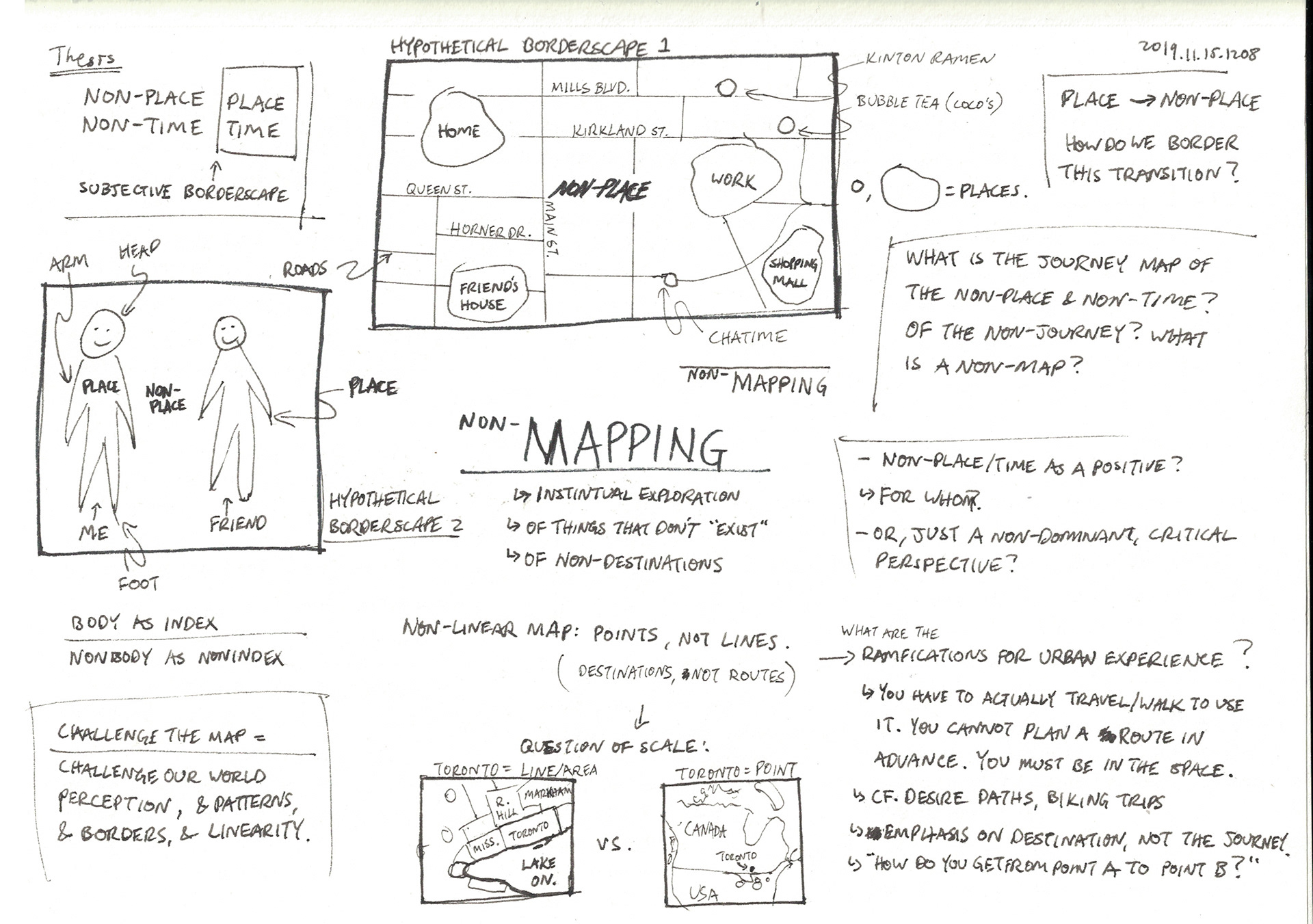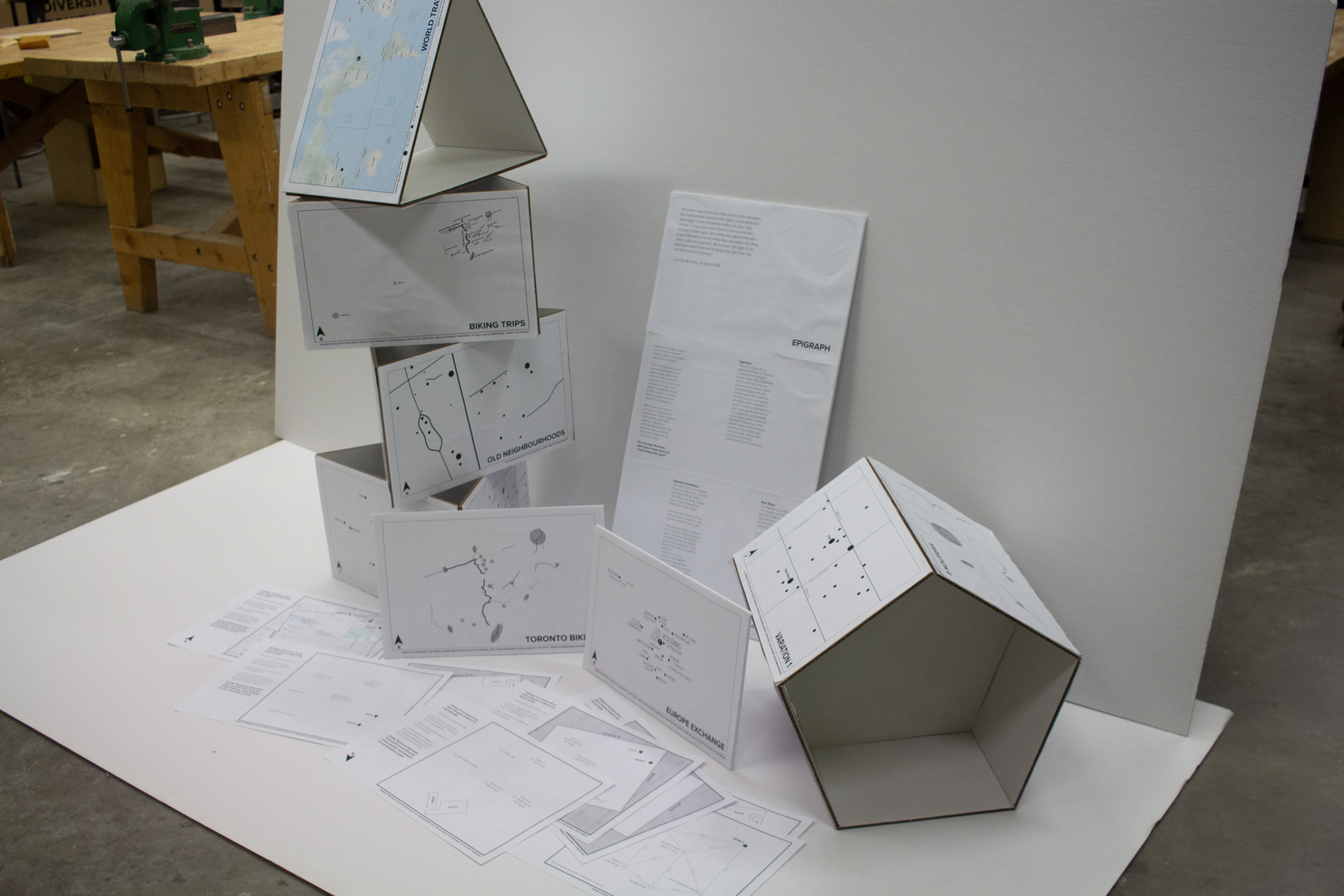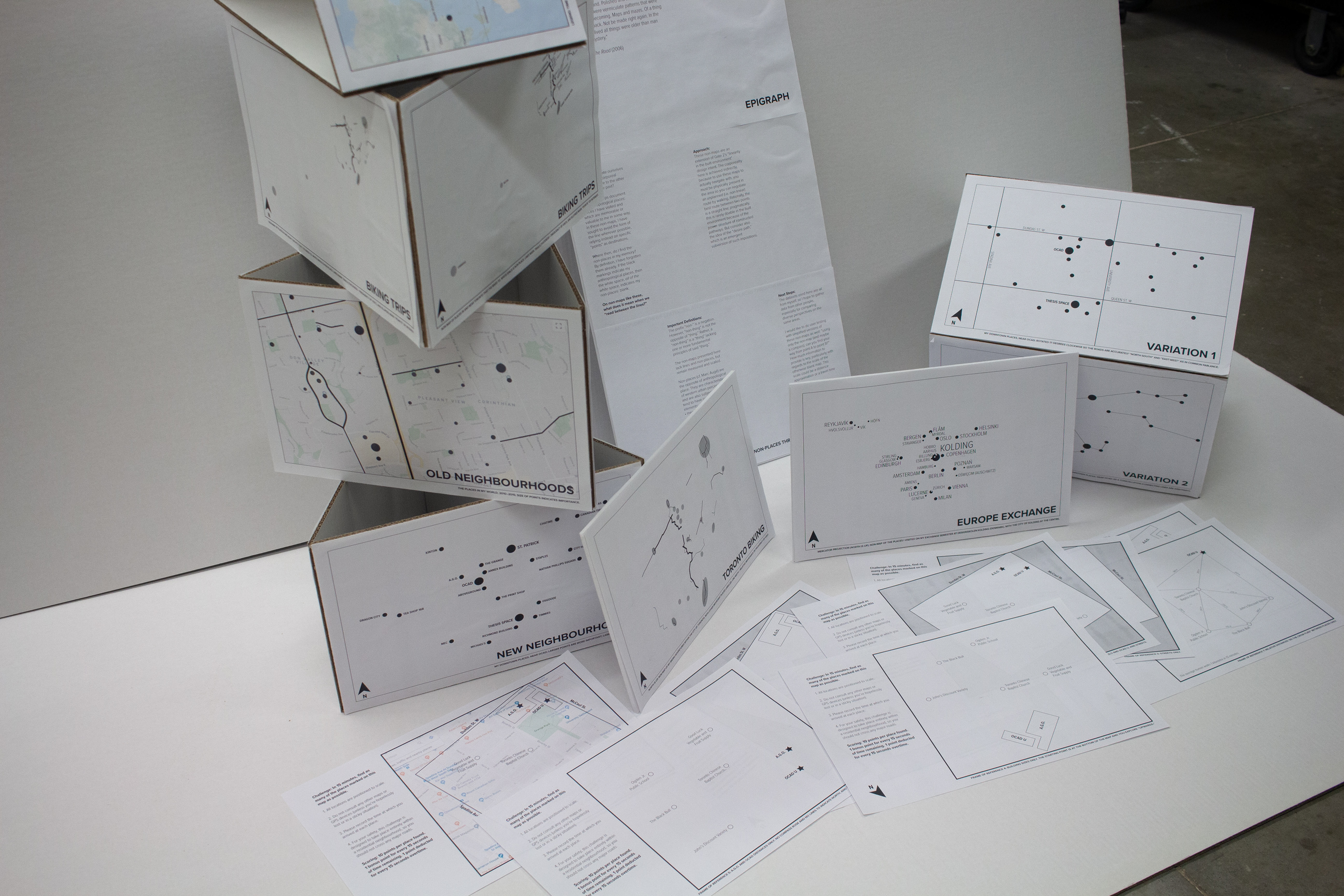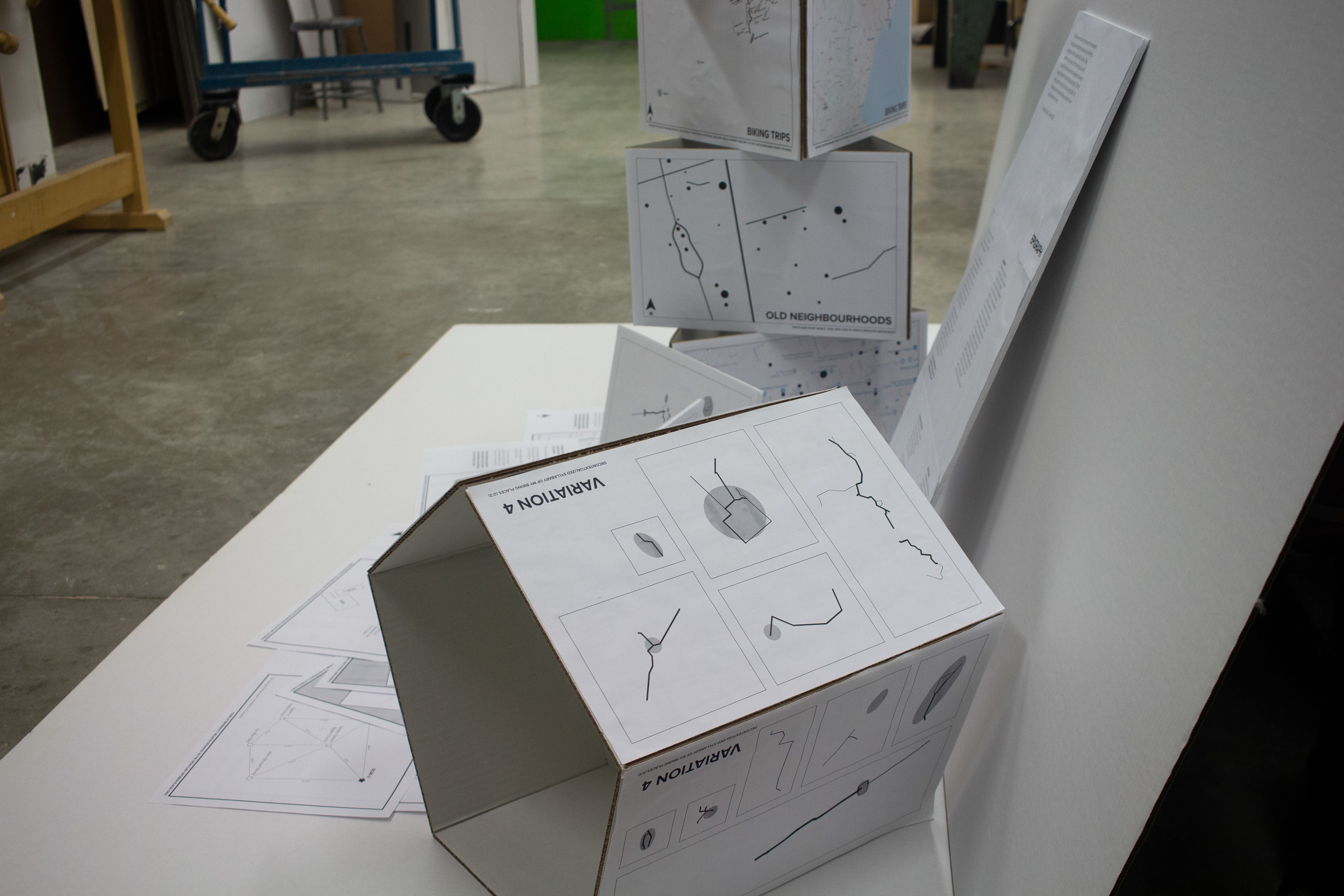INQUIRY
How do we situate ourselves in our present, corporeal location, relative to the other places from our past? How do we understand where we are?
The essence of the non-linear map is that it is composed solely of points (places), without any interstitial lines and markings (non-places). A non-map represents an individual’s perception of an area, with a complete focus on places that have salience at the omission of everything else in between. It is a spatial diagram of memory, telling you where things are situated in relation to other things, but not how to get there.
RADICAL NON-LINEARITY
These maps were part of a broader exploration at the time which I termed Radical Non-Linearity. This ethos seeks to break away from the linear, hyper-optimized structures that lend everyday life its monotonous nature—“walls” and “planning” in every manifestation. Instead, it embraces Situationist instincts and aleatorics, always looking out for the scenic routes, even if they are slower or more difficult. It is a manifesto against any and all notions of a day’s journey being “solved” before it has even begun—every detail of an itinerary planned out like ticking boxes off a checklist. It celebrates the open-endedness of human agency.






NON-LINEAR WAYFINDING
The traveller must be corporeally present in the space in order to navigate with these Non-Linear Maps, through mediating directional intent with the paths and obstacles in their way. This type of radically non-linear routing is psychogeographic (Situationist) in nature. It can never be planned ahead of time, and going on such an excursion exposes the power structure of constructed pathways and barriers in the built environment and the impact they have on your movement by virtue of their material tangibility.
I carried out a research activity on non-linear wayfinding through interstitial spaces, which is described in my Wayfinding Challenge project.